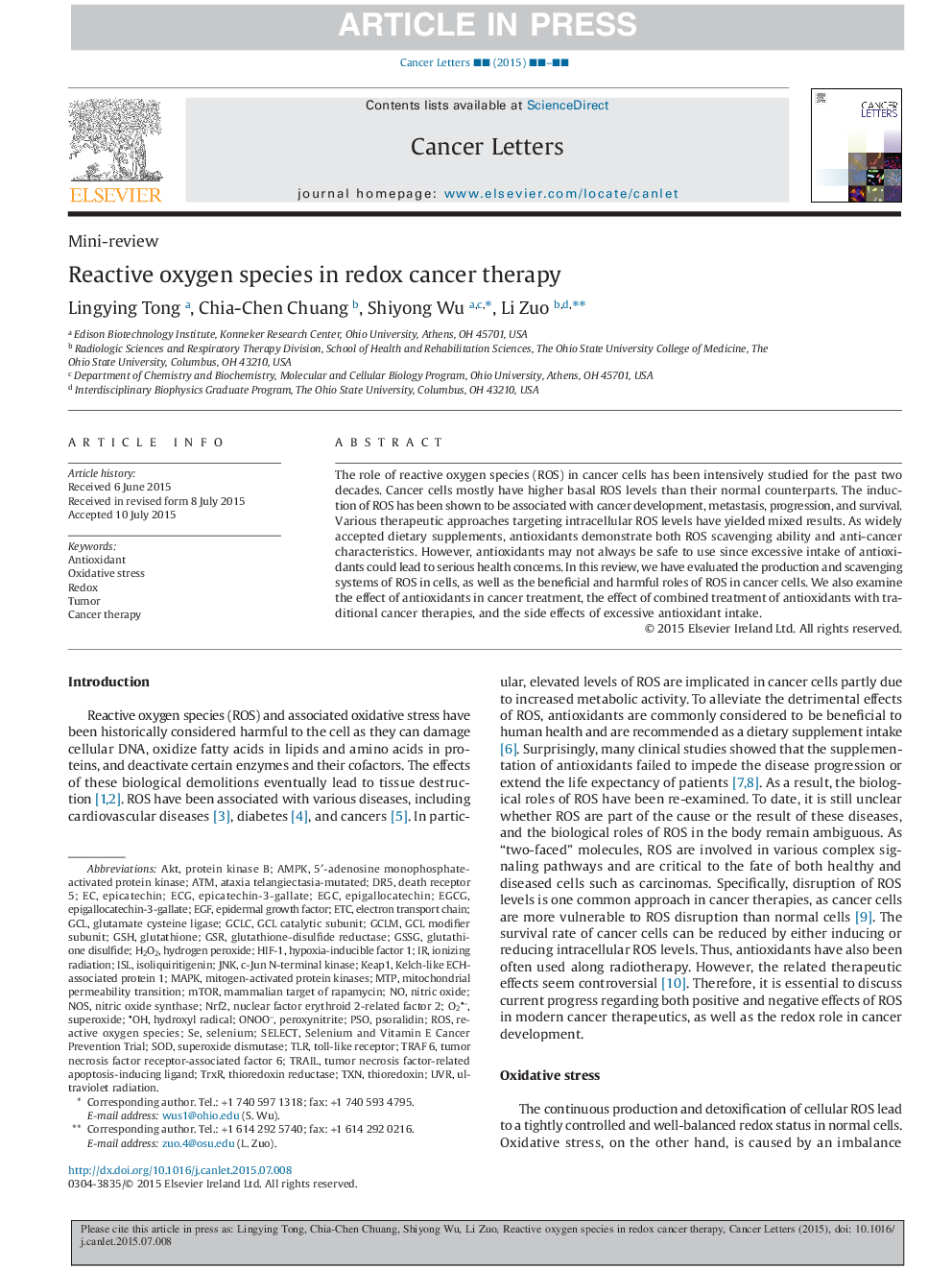| Article ID | Journal | Published Year | Pages | File Type |
|---|---|---|---|---|
| 10902030 | Cancer Letters | 2015 | 8 Pages |
Abstract
The role of reactive oxygen species (ROS) in cancer cells has been intensively studied for the past two decades. Cancer cells mostly have higher basal ROS levels than their normal counterparts. The induction of ROS has been shown to be associated with cancer development, metastasis, progression, and survival. Various therapeutic approaches targeting intracellular ROS levels have yielded mixed results. As widely accepted dietary supplements, antioxidants demonstrate both ROS scavenging ability and anti-cancer characteristics. However, antioxidants may not always be safe to use since excessive intake of antioxidants could lead to serious health concerns. In this review, we have evaluated the production and scavenging systems of ROS in cells, as well as the beneficial and harmful roles of ROS in cancer cells. We also examine the effect of antioxidants in cancer treatment, the effect of combined treatment of antioxidants with traditional cancer therapies, and the side effects of excessive antioxidant intake.
Keywords
GSRDR5GCLCMTPTrxRNrf2HIF-1GSHEGCGmTORUVRTLRGSSGNOSGCLEGCEpigallocatechin-3-gallateepigallocatechinepicatechinAMPKGCLMSelenium and Vitamin E Cancer Prevention Trialepicatechin-3-gallateisoliquiritigeninPsoralidinTXNJnkEGFO2•–ONOO–5′-adenosine monophosphate-activated protein kinasekeap1c-Jun N-terminal kinaseislMAPKROSHydrogen peroxideAntioxidantAktUltraviolet radiationECGSelectmitochondrial permeability transitionPSOionizing radiationthioredoxin reductaseOxidative stressTumorthioredoxinToll-like receptorATMHydroxyl radicalRedoxelectron transport chainSODCancer therapySeleniumSuperoxideSuperoxide dismutasehypoxia-inducible factor 1epidermal growth factortumor necrosis factor receptor-associated factor 6nuclear factor erythroid 2-related factor 2TRAILglutamate cysteine ligasetumor necrosis factor-related apoptosis-inducing ligandNitric oxidenitric oxide synthasemammalian target of rapamycinH2O2ETcKelch-like ECH-associated protein 1protein kinase BPeroxynitritemitogen-activated protein kinasesGlutathioneglutathione disulfideReactive oxygen speciesdeath receptor 5•OH
Related Topics
Life Sciences
Biochemistry, Genetics and Molecular Biology
Cancer Research
Authors
Lingying Tong, Chia-Chen Chuang, Shiyong Wu, Li Zuo,
